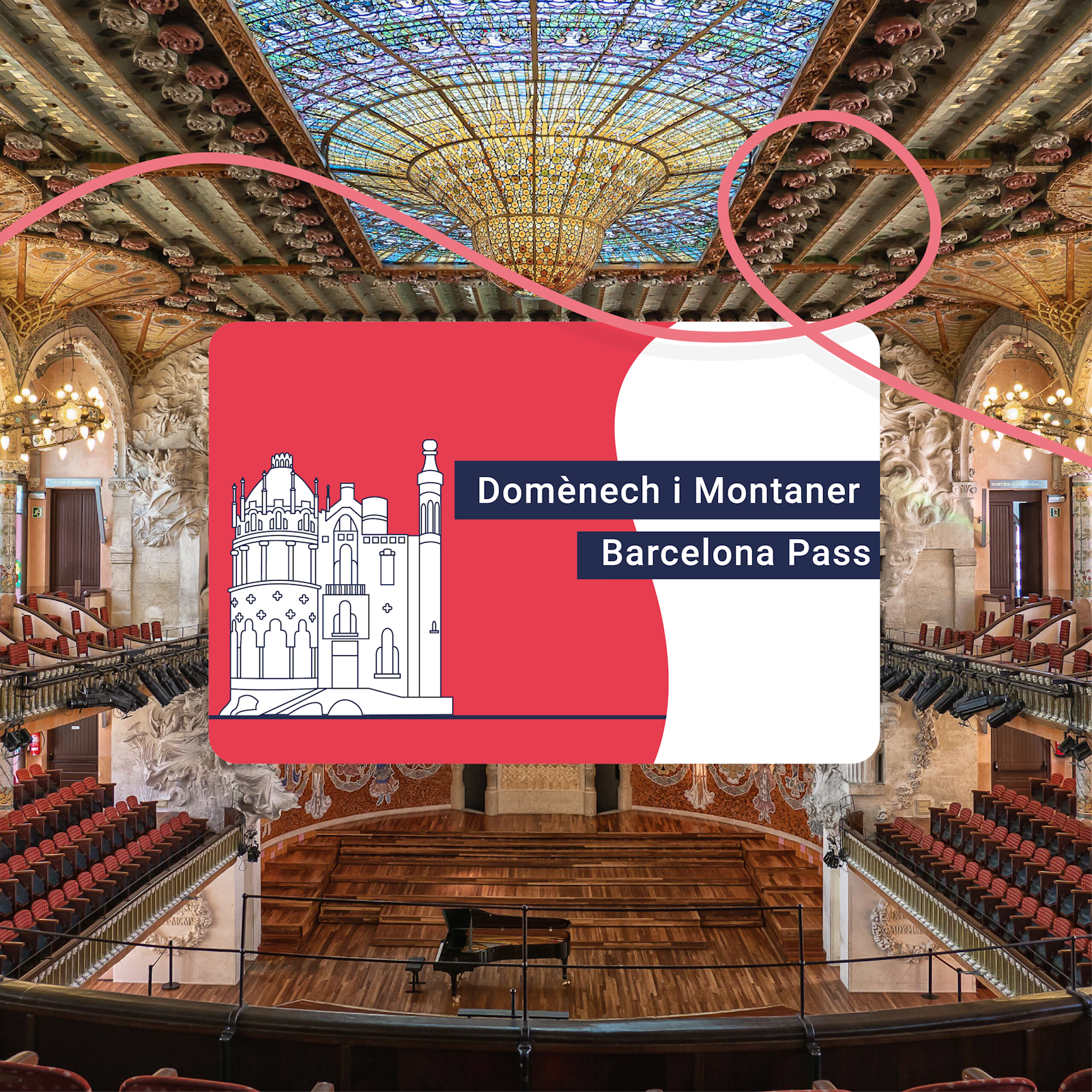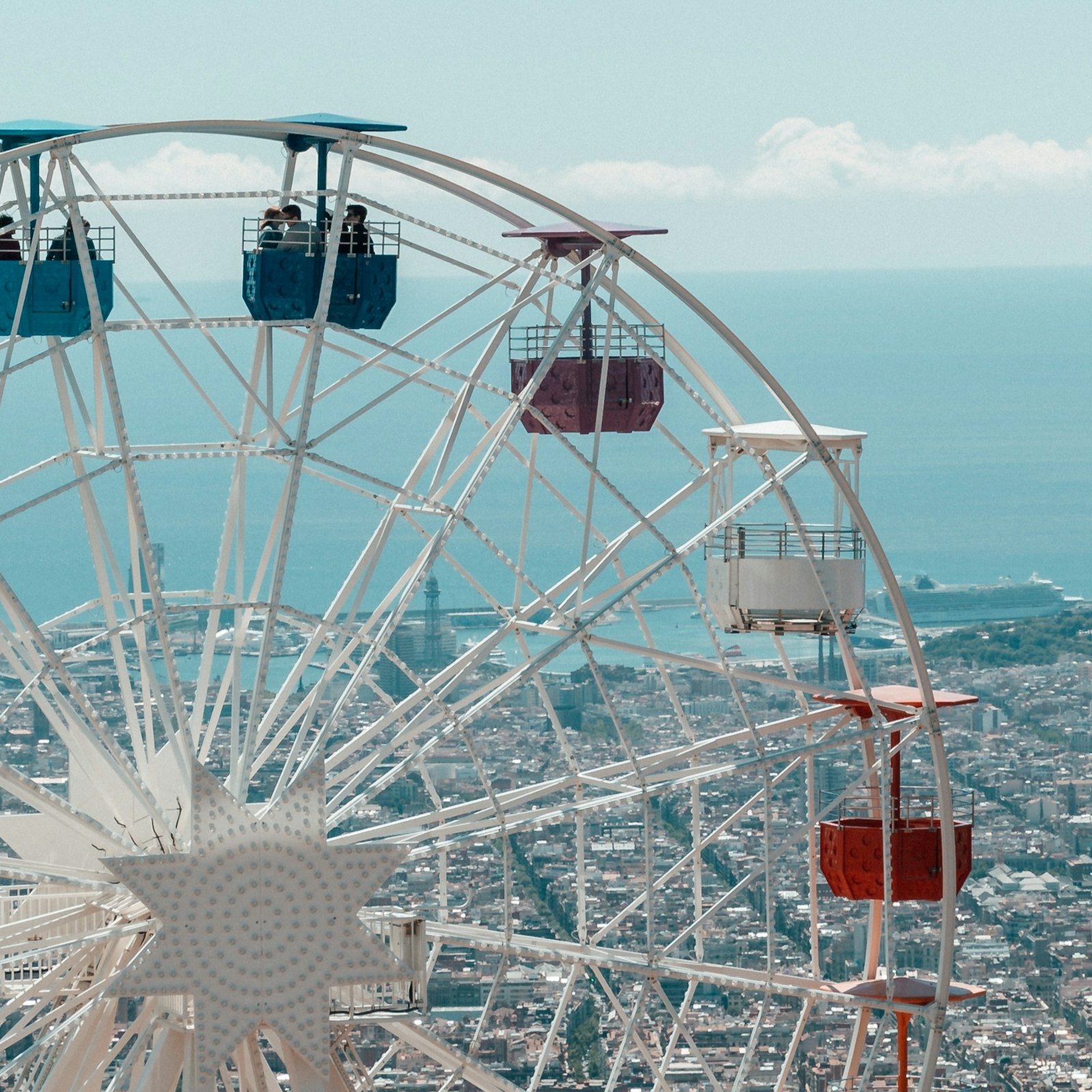Sant Pau Art Nouveau Site: Skip The Line Ticket | Sant Pau Hospital
Enjoy an architectural masterpiece
- Sant Pau Art Nouveau Site: Skip The Line Entry Ticket

Recenita Sant Pau Art Nouveau Sant Pau Hospital Tickets and Information
- Recinta Modernista de Sant Pau Address: Carrer de Sant Antoni Maria Claret, 167, 08025, Barcelona
- Opening Hours: Daily from 09:30 - 18:30
Is Recinta Modernista Sant Pau Worth Visiting
- If you enjoy incredible architecture, its a must.
- If you enjoy historical buildings steeped in history, yes.
- If you enjoy UNESCO World Heritage Sites, yes.
- If you are a fan of Domènech i Montaner, its a must.
What You See At Recinta Sant Pau Art Nouveau Hospital
- The incredible gardens
- The property (multiple pavilions)
{{ticket-block-triple}}
About Recinta Modernista - Sant Pau Hospital
The Sant Pau Art Nouveau Site was designed by Catalan architect Lluís Domènech i Montaner, and is one of Barcelona's architectural gems.
Domènech i Montaner, who also designed other UNESCO World Heritage Sites in Barcelona, was commissioned by the hospital board and the executors of Pau Gil's estate. Pau Gil was a wealthy benefactor, who had left funds in his will to build a modern hospital in Barcelona.
The building is known by various names, including:
- "Sant Pau Art Nouveau Site,"
- "Hospital de la Santa Creu i Sant Pau,"
- "Recinte Modernista Sant Pau,"
- "Sant Pau Hospital," the property stands out for its architectural and historical significance.
Domènech i Montaner envisioned the site as a complex of pavilions connected by underground tunnels, built on the grounds of an old mediaeval hospital. While his original plan called for 48 pavilions, only 27 were constructed, with 16 adhering to his Modernista vision.
Domènech i Montaner's design aimed to uplift patients' spirits by integrating architectural beauty and natural elements. The site features mosaic art, colourful roof tiles, intricate arches, and other artistic details and each building was dedicated to a different medical specialty.
Sadly, Domènech i Montaner passed away in December 1923 before the project was completed. His son, Pere Domènech i Roura, took over and finished it and King Alfonso XIII officially opened the hospital in January 1930 as ‘Hospital de la Santa Creu i Sant Pau’.
In 1978, the Sant Pau Art Nouveau Site was declared a Historic Artistic Monument, and it achieved UNESCO World Heritage Site status in 1997. It remains a popular tourist attraction.
The hospital functioned as a medical facility until 2009, when operations moved to a new location to accommodate growing demands and space requirements. The Modernista buildings were then meticulously restored, transforming into the renowned Sant Pau Art Nouveau Site that is incredibly popular today.
The Buildings
- The Main Building: The main building is the entrance and offers an amazing facade. This is where the patients were admitted to the hospital. The main building is also where you will see the underground tunnel entrance points that connect the various pavilions and hospital wards and were used to transfer patients between the buildings.
- Sant Salvador Pavilion: In the Sant Salvador Pavilion you will find a space used for exhibiting the history of medicine in Barcelona. It shows a range of medical equipment and materials as well as architectural elements and models. This exhibit also shows the history of the hospitals heritage.
- Sant Rafael Pavilion: Another of the pavilions, the Sant Rafael Pavilion is home to a display showing what the hospital looked like when it was built. It also includes old medical tools and the beds used at the time.
- The Gardens: As well as the buildings, the Recinta Modernista Sant Pau also offers a beautiful garden. Its suggested that Doménech i Montaner took inspiration from the garden city movement in the design and one of the purposes of the gardens was supposedly to grow medical plants which would have in turn been used for their medicinal purposes in the hospital on patients. Now the gardens are home to plants from all over the world.
The Recinta Sant Pau Art Nouveau Site is another of the city's incredible UNESCO World heritage Sites waiting for you to explore it!
Popular Tickets
Popular Attractions
Recinte Modernista de Sant Pau FAQs
- What is the history of the Recinte Modernista Sant Pau in Barcelona?
- The Recinte Modernista Sant Pau was constructed between 1902 and 1930 as a state-of-the-art hospital to serve Barcelona's growing population. It was designed by modernist architect Lluís Domènech i Montaner. The complex functioned as a hospital until 2009, after which it was restored and repurposed as a cultural and tourist site and a UNESCO World Heritage Site.
- Who was Lluís Domènech i Montaner, and what was his role in designing Sant Pau?
- Lluís Domènech i Montaner was one of the most prominent architects of the Catalan Modernisme movement. He designed Sant Pau as a utopian medical complex that emphasized functionality, beauty, and harmony, incorporating natural light, ventilation, and colorful ceramic details. He designed it with a view to trying to help and aid patients’ recovery.
- Why is the Recinte Modernista Sant Pau considered a UNESCO World Heritage Site?
- Sant Pau was designated a UNESCO World Heritage Site in 1997 (alongside the Palau de la Música Catalana - another building also designed by Lluís Domènech i Montaner) because of its architectural innovation, artistic value, and representation of Catalan modernism. It’s celebrated for blending functionality with exquisite design and craftsmanship.
- What was the original purpose of the Recinte Modernista Sant Pau?
- The complex was built to serve as a hospital. It offered cutting-edge healthcare in a serene and inspiring environment. Its layout and design prioritised patient comfort, hygiene, and recovery, making it a pioneering medical facility for its time.
- What are the main architectural features of the Recinte Modernista Sant Pau?
- Sant Pau features pavilions which are covered with colorful mosaics, intricate sculptures, and stained-glass windows. Key highlights include the Administration Pavilion, Pavilion of the Infirmaries, and beautifully landscaped gardens connecting the buildings. The architect designed them to try and aid the patients’ recovery.
- What is the significance of the gardens at Sant Pau in Barcelona?
- The gardens are integral to the complex’s design, providing a peaceful, healing environment for patients. The intention of the garden was to grow plants that could have been used in the patient’s recovery.
Recinte Modernista Sant Pau Fun Facts
- A Modernist Masterpiece by Domènech i Montaner: Designed by the renowned Catalan architect Lluís Domènech i Montaner, Sant Pau is one of the most significant examples of Catalan Modernisme (Art Nouveau) architecture. Domènech i Montaner is also the genius behind other iconic buildings like the Palau de la Música Catalana.
- A "City Within a City": Sant Pau was conceived as a garden city for healthcare, with 27 interconnected pavilions. Each building was thoughtfully designed with natural light and ventilation, creating a tranquil environment for patients and staff.
- Inspired by Nature: Domènech i Montaner incorporated natural motifs like flowers, plants, and animals into the design. The colourful ceramic tiles and mosaics were filled with symbolic elements meant to foster healing and positivity for the patients.
- A UNESCO World Heritage Site: In 1997, Sant Pau, along with the Palau de la Música Catalana, was declared a UNESCO World Heritage Site for its outstanding architectural and cultural significance!
- From Hospital to Cultural Center: After serving as a hospital for over a century (1902–2009), the site was restored and reopened in 2014 as a cultural and historical complex. It now hosts exhibitions, events, and guided tours.
- Built with the Patient in Mind: Domènech i Montaner designed the hospital with innovative features for its time. Separate pavilions were dedicated to different specialties, and underground tunnels connected them, ensuring efficient and discreet patient transfers.
- A Mosaic of Healing: The intricate mosaics throughout the complex aren't just decorative; they incorporate religious and allegorical symbols, like saints and protective figures, believed to aid in the healing process.
Useful Information About Sant Pau Art Nouveau
Tip for visiting Sant Pau Modernista
- Book Tickets Online: As one of Barcelona's most popular tourist attractions, we suggest you book tickets in advance if you know when you plan to visit. This can save time from queuing at the ticket office and gives you more time to enjoy the property.
- Combination Tickets: See our range of combination tickets that include access to Recinta Modernista Sant Pau Hospital. Click HERE for options.
- Things to do in Barcelona: See our full range of things to do in Barcelona by CLICKING HERE.
How to Get There
- Recinte Modernista de Sant Pau Address: Carrer de Sant Antoni Maria Claret, 167, 08025, Barcelona
- By Bus: via bus, you can take H8, 19, 47, 117, or 192 and get off at the Sant Antoni Maria Claret-Recinte Modernista stop. From there, it's a short walk to the entrance.
- By Metro: The L5 metro and get off at the Sant Pau - Dos de Maig station. From there, it's around a 5-minute walk to the entrance.
- By Tram: The T4 tram to the Sant Pau stop. From there, it's only a 2-minute walk to the entrance.
- By Car: Car parking is available at Recinto Modernista de Sant Pau
Opening Hours
- Monday: 09:30 - 16:00
- Tuesday: 09:30 - 16:00
- Wednesday: 09:30 - 16:00
- Thursday: 09:30 - 16:00
- Friday: 09:30 - 16:00
- Saturday: 09:30 - 16:00
- Sunday: 09:30 - 16:00




























